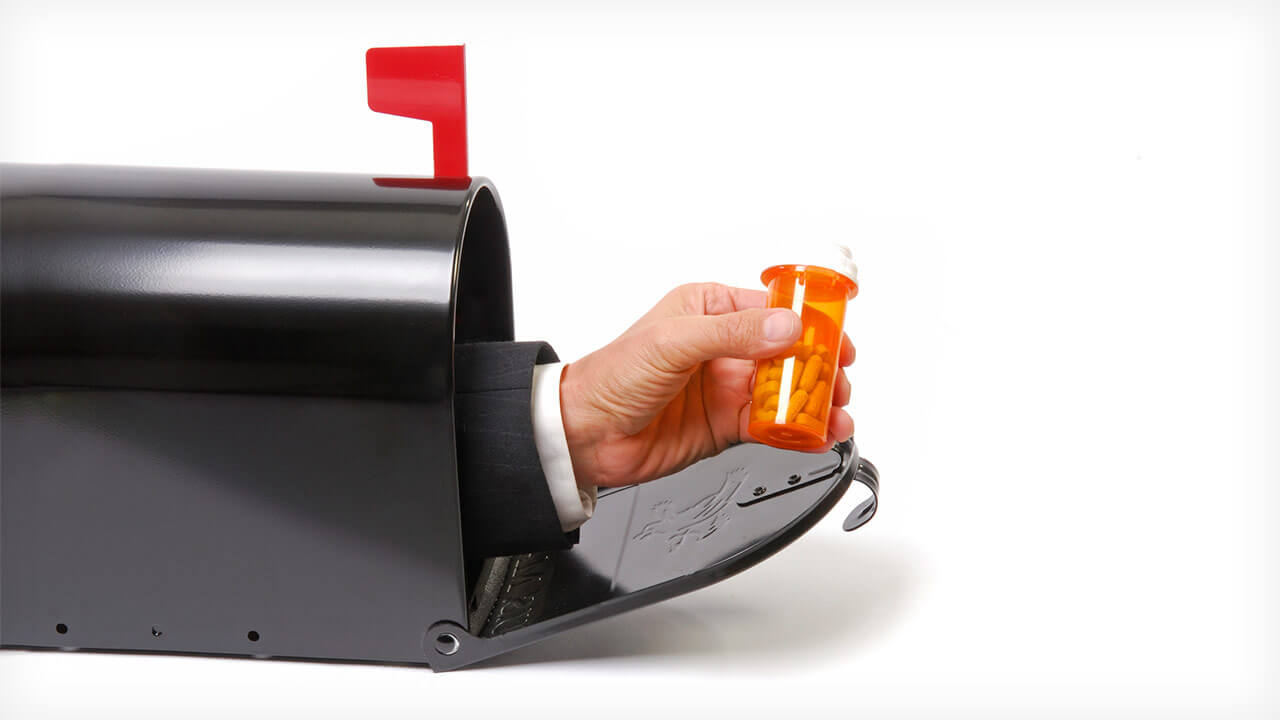Top 3 Things You’ll Learn
- The history and value of mail order pharmacies in the United States
- How mail order prescription services became common in the market
- Types of medications available for home delivery with a mail order pharmacy
It can be argued that few developments in the history of the pharmacy benefits industry have had as much impact on members recently as the rise of mail order services – especially in the last year as people and the healthcare industry adapted under the constraints of the COVID-19 pandemic. Mail order medication services have enabled people of all ages to obtain their medications without needing to visit a retail store, often at a reduced out of pocket expense. This unmatched convenience is one of the most common benefits of obtaining medications from a mail order pharmacy.
History of Mail Order Pharmacies
In 1946, the United States Veterans Administration offered the first mailed prescription drug services to eligible veterans. In 1959, retiree members of the National Retired Teachers Association (later the American Association of Retired Persons) were offered mail pharmacy services as part of their membership. Later in the 1960s, other for-profit entities tried to enter the market, to some opposition.
It wasn’t until the 1980s when the mail order pharmacy market really began expanding and gaining popularity. Revenues from mail service prescription drug sales skyrocketed to $1.5B. However, the market was still dominated by an older patient population. A 1988 study of mail order pharmacies conducted by the U.S. Congress revealed that more than half (57%) of total mail service pharmacy sales were to the elderly.
In the 1990s, the trend of mail service pharmacies continued to grow as more people sought a convenient and cost-effective way to get their prescription drugs. By the 2000s, more employers offered a mail service pharmacy option, pushing mail order utilization to more than 18% of all prescriptions dispensed, according to a 2011 analysis published by the Drug Channels Institute. It was during this time that mail order gained traction as a preferred option among health plans, pharmacy benefit managers (PBMs), and members themselves. Depending on the financial and access-related goals of a given employee benefits program or health plan, mail order was either offered as an opt-in service or mandated for certain maintenance medications for chronic health conditions.
Mail order medication services have enabled people of all ages to obtain their medications without needing to visit a retail store or visiting a doctor’s office. Convenience and member out of pocket costs are some of the most common benefits of obtaining medications from a mail order pharmacy.
Fast forward to 2020. People all over the world were forced to adjust their lifestyles amidst the global pandemic, creating a need for medication access while adhering to quarantine and lockdown guidelines. Mail order pharmacies became a primary medication access point for high-risk members or members under lockdown or quarantine orders to obtain their needed prescription drugs. Additionally, some local retail pharmacies changed their business practices to offer home delivery, while online pharmacies with free or reduced shipping have emerged creating an online drugstore experience.
Read more: 25 Major Moments in the History of Pharmacy Benefits
Mail Order vs Retail Pharmacy Options
The mail order phenomena was subsequently validated by a recent RxBenefits claims analysis, which discovered several notable shifts in prescription drug mix and in prescription benefit utilization during the pandemic. Refill rates and quantities dispensed shifted, specifically from 30-day to 90-day retail prescription drug fills. Additionally, the availability of 90-day supplies of maintenance medications via mail service similarly contributed to this shift in utilization of chronic medications on employer-sponsored pharmacy plans.
When considering offering or using a mail order pharmacy, it’s important to understand which medications qualify for the mail service option. A complete list of available mail order vs retail medication options can be accessed from the health plan or benefits administrator. As I discussed in Everyday Health magazine, mail-order services generally are intended for patients who require regular daily doses of prescription drugs.
Daily therapies, also known as maintenance medications, keep patients on a regular schedule and minimize the risk for treatment lapses. Maintenance medications include medications for blood pressure, asthma, heart disease, and diabetes. One-time prescriptions, such as antibiotics to fight off an infection, are not considered for mail order. For these types of prescription drugs not available by mail-order, members typically have the option to purchase medications in 30-day or 90-day supplies from a retail pharmacy or drug store, depending on the pharmacy benefit plan design.
Read more: Analyzing the Value of Retail-30 vs Retail-90 Benefit Design Strategies
SOURCES
- Pharmacy Times
- Health Affairs
- Drug Channels
- Everyday Health
- RxBenefits



